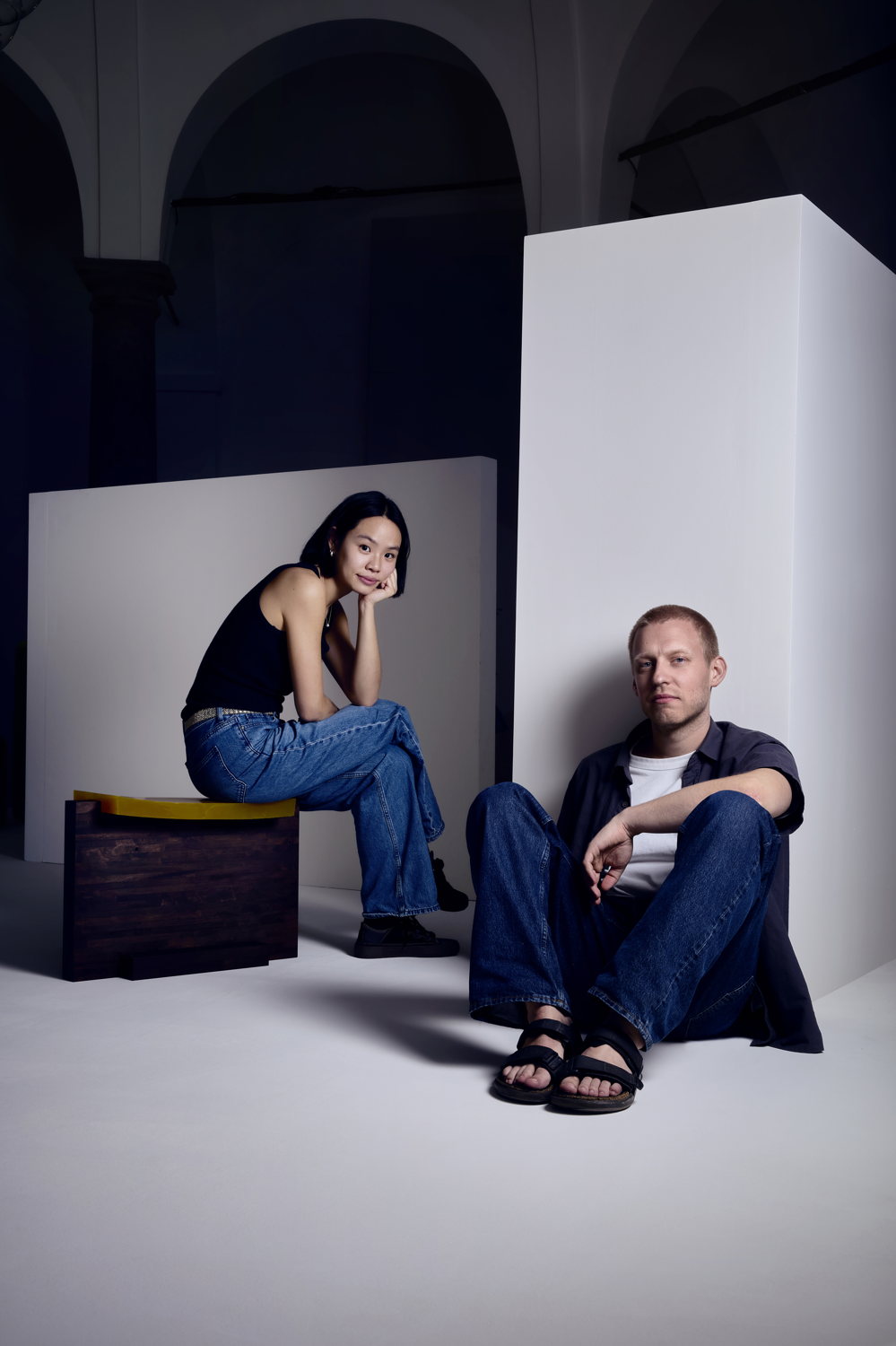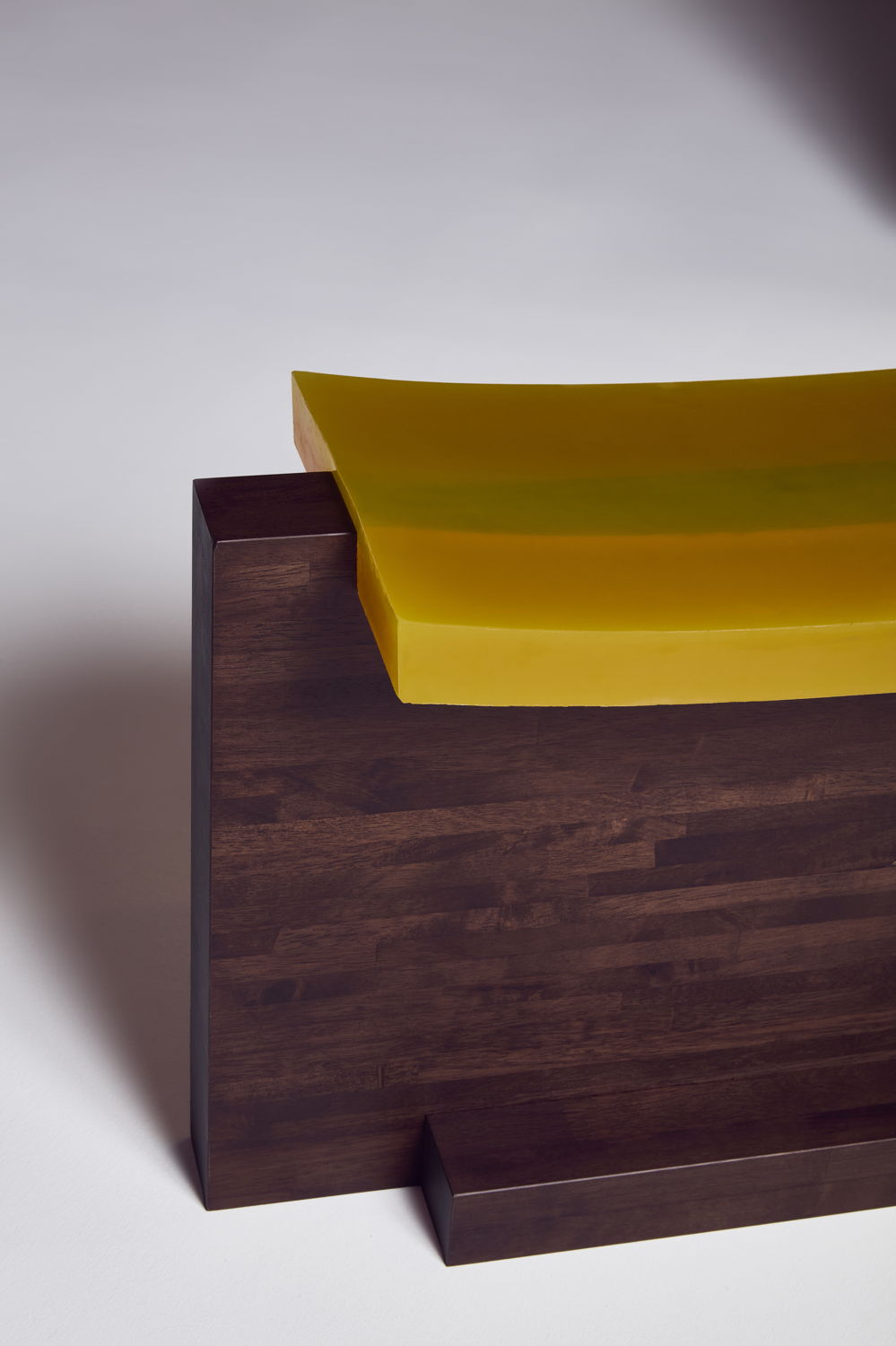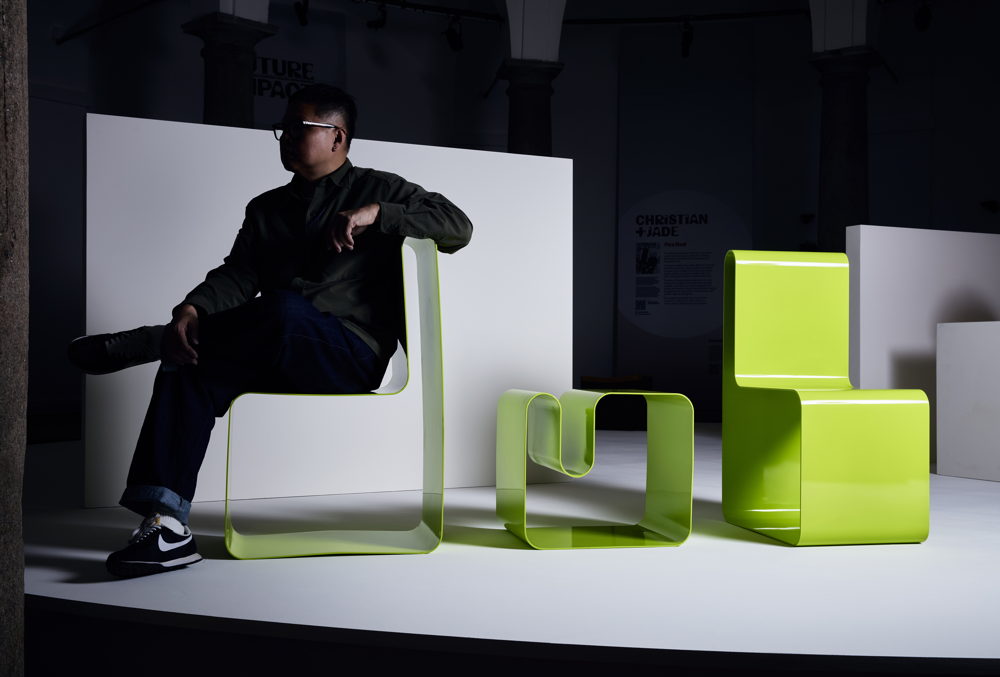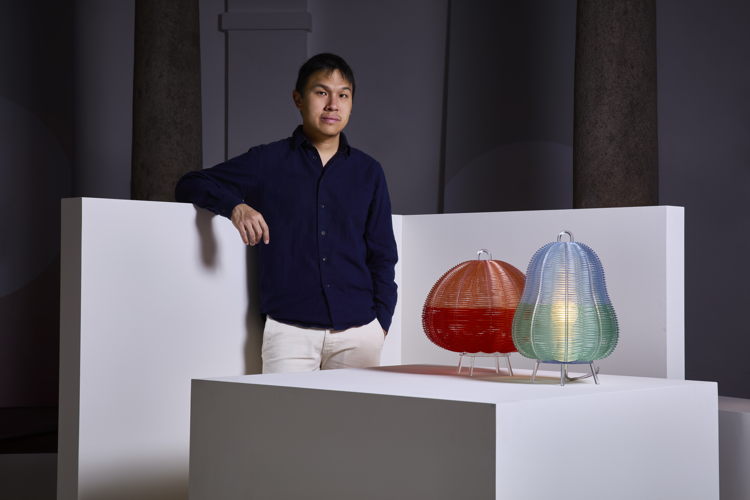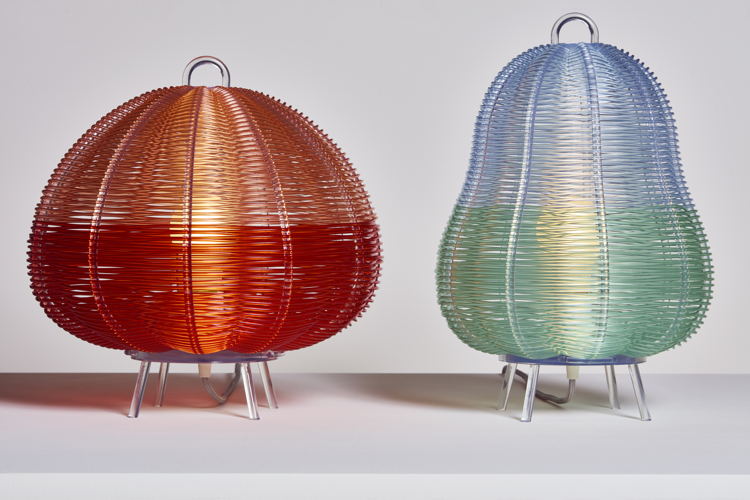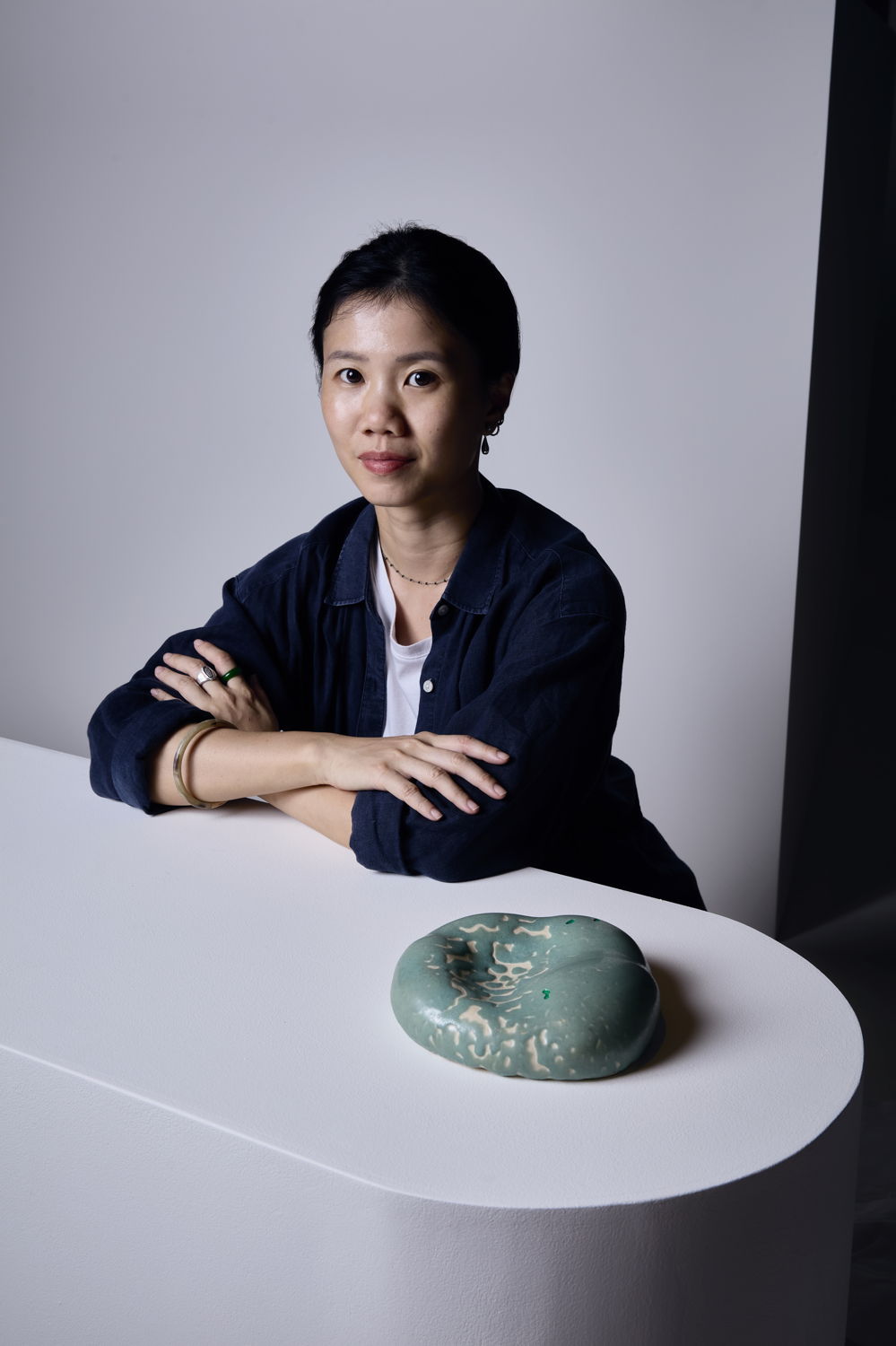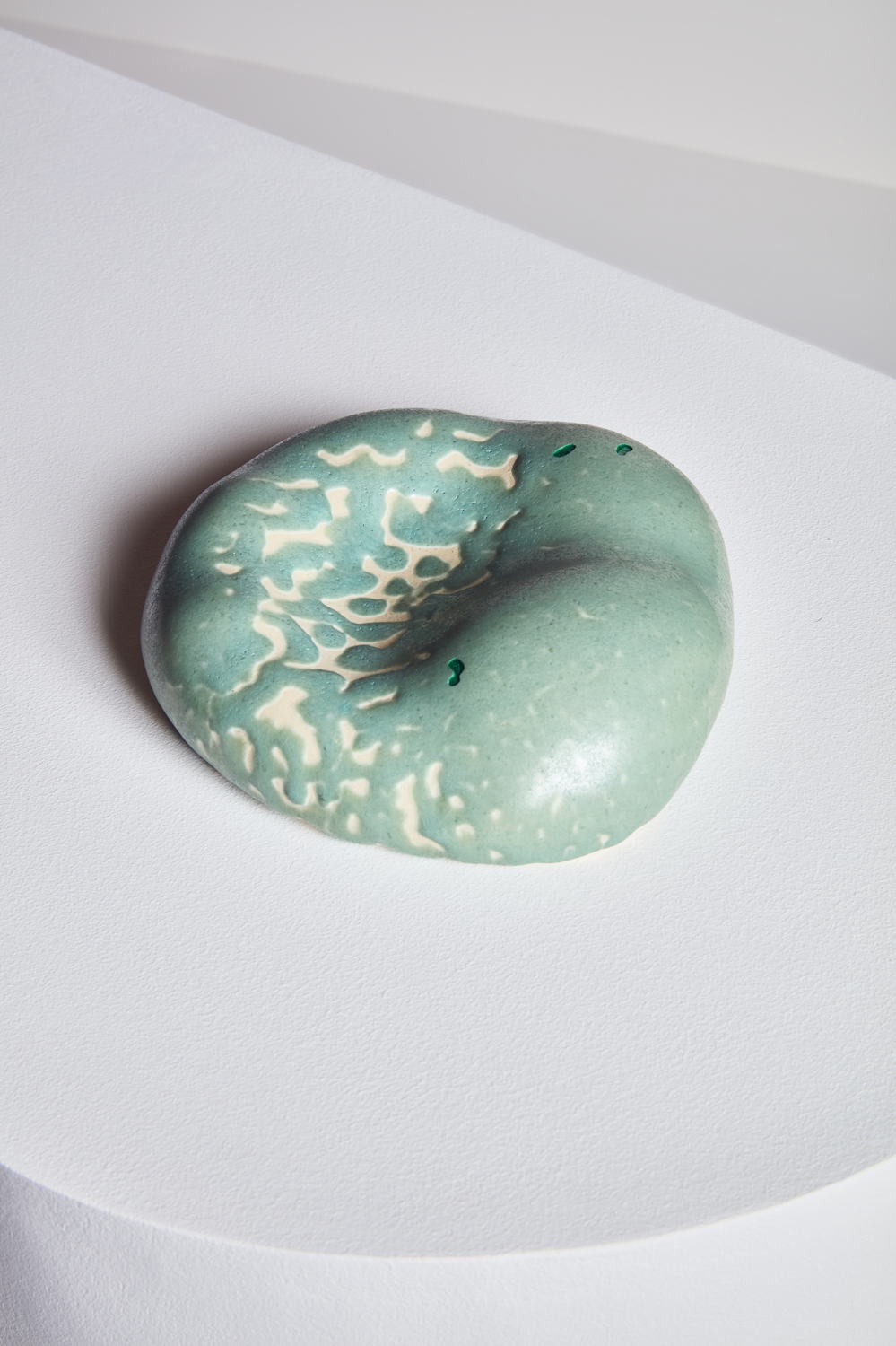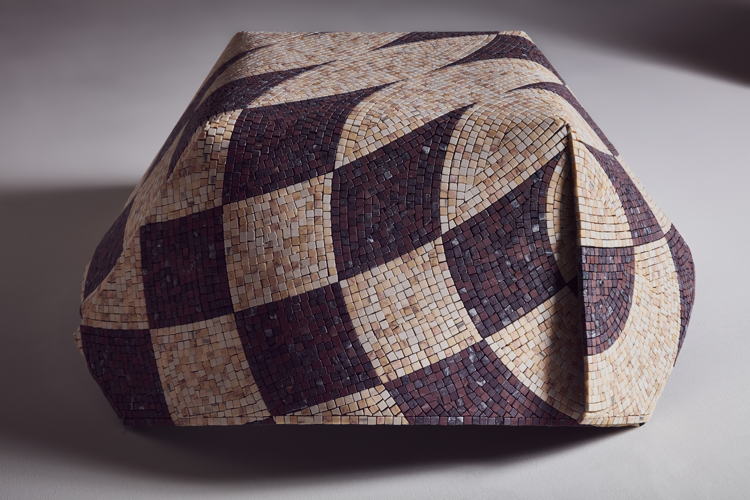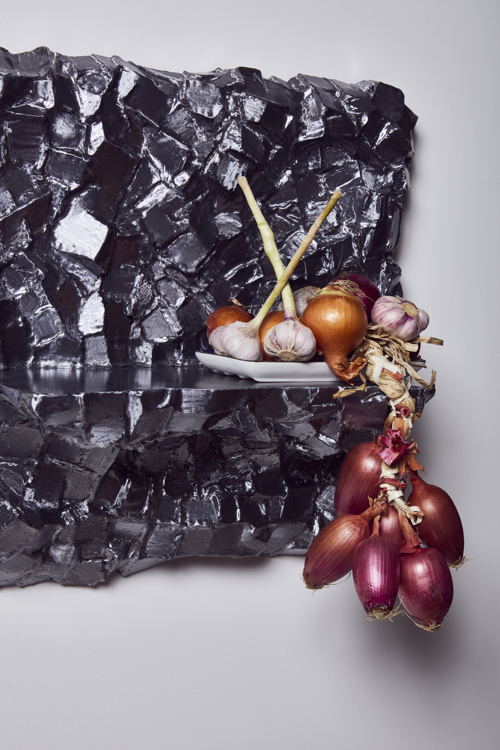Future Impact 2: Singapore’s designers forge a groundbreaking era of technology-led sustainable design this Milan Design Week
From furniture that absorbs carbon dioxide to heat-transferring ceramics, seven trailblazing designers experiment with technology, materiality and production at the Future Impact 2 showcase
April 15, 2024
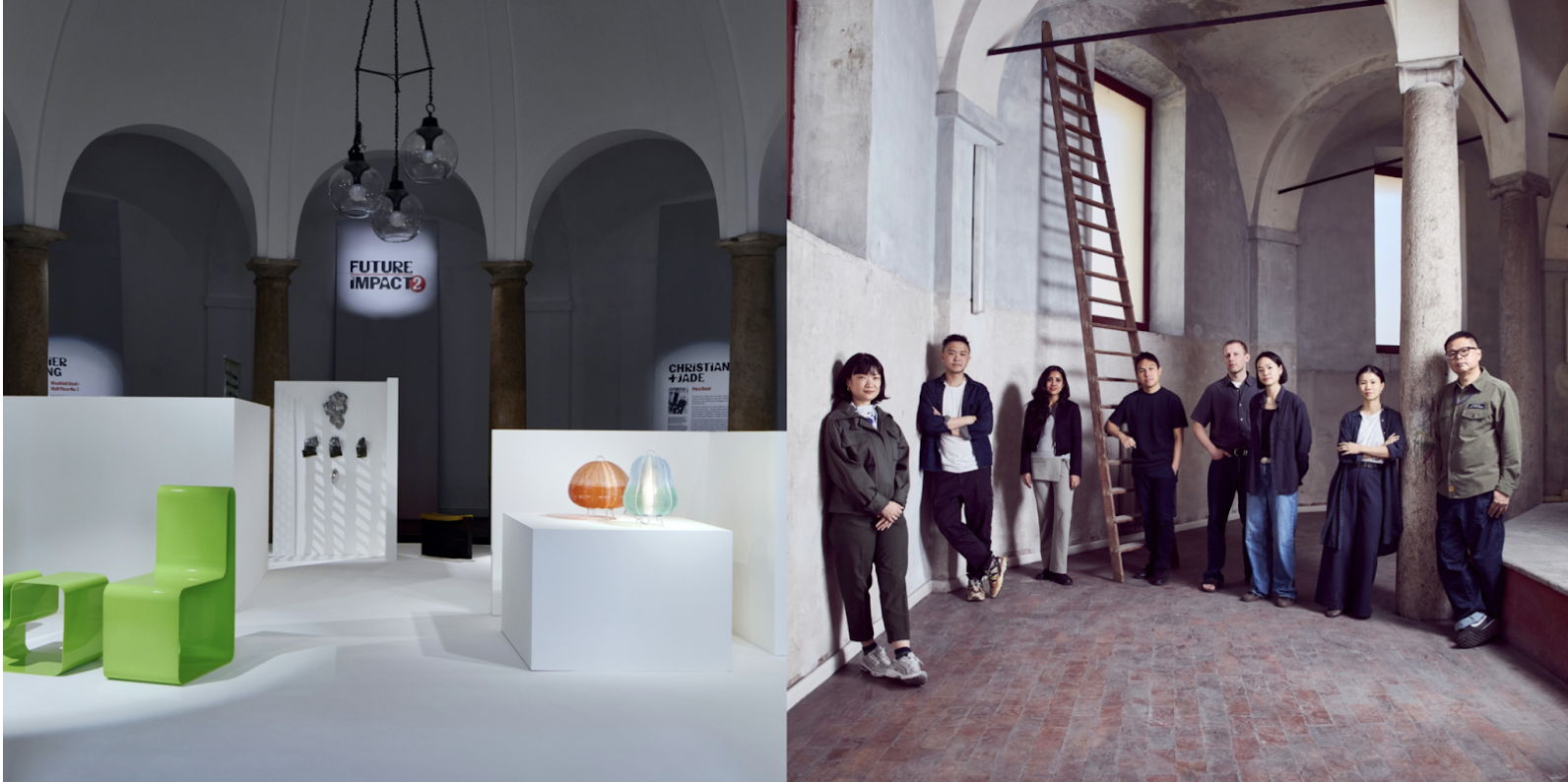
Milan, 16 April 2024 - DesignSingapore Council has returned to Milan Design Week with Future Impact 2 at the historic La Rotonda del Pellegrini from 16 - 21 April 2024.
Curated by Tony Chambers and Maria Cristina Didero, the showcase reveals a suite of newly commissioned works by seven of Singapore’s most innovative designers, demonstrating the evolving and transformative power of design for a more sustainable future.
In an era defined by technology and sustainability, the curators worked with the designers to present positive and impactful design solutions for a better tomorrow. The designers have either integrated a different technology or pushed the boundaries of production, to develop a series of works that minimise environmental impact, reconsider current production methods, and enhance functionality.
The participating designers are: Christian+Jade, David Lee, Faezah Shaharuddin, Genevieve Ang and Interactive Materials Lab, and Zavier Wong. Following their participation in the inaugural edition of Future Impact during Milan Design Week 2023, Gabriel Tan and Tiffany Loy are back with new ideas that reflect the latest developments in their practice.
From unifying traditional craftsmanship with 3D printing, to streamlining production with technology, to furniture designs that remove carbon dioxide from living spaces and interactive ceramics that can transfer heat, Future Impact 2 reflects Singapore’s distinctively forward-thinking vision and approach to design.
Tony Chambers, co-curator of Future Impact 2, shared: “The creative talents emerging from Singapore never cease to amaze and inspire us, so it's a joy once again to shine a light on them in Milan during Salone del Mobile – the global stage of design innovation”
Maria Cristina Didero, co-curator of Future Impact 2 shared: “We are honoured to present a second iteration of Future Impact at this year’s Design Week in Milan. Building upon the resounding success of last year and fuelled by the unwavering dedication of our designers, we proudly showcase Singapore's excellence once again. Through this exhibition, designers unveil the transformative potential of technology, marking a pivotal moment in design innovation, but also pure talent and creativity, in the unique frame of a historical Milan landmark such as the Rotonda del Pellegrini."
“Design remains essential to the future of emerging technology and sustainability. We are thrilled to present Future Impact again this year, expanding on the last edition to take these topics further through a Singapore design lens. As a prototyping city that incorporates innovation as part of its design approach, I believe these fresh works will resonate with audiences and spur their own thinking on new possibilities for the future of design and its impact,” says Dawn Lim, Executive Director of DesignSingapore Council.
The designers and works featured in Future Impact 2 are:
Christian+Jade
Design duo Christian+Jade explore rubber production and material waste with the Para Stool, crafted from the Para rubber tree found in Singapore and Southeast Asia. The lesser known rubber wood is usually burned after a 30 year lifespan of rubber cultivation, and Christian+Jade are repurposing the wood, together with the natural rubber, to spotlight the beauty and quality of rubber, bridging the gap between preconceptions of the material and its origin as a living tree.
The project is produced with support from Karimoku who is sourcing under-utilised rubber wood from Malaysia.
David Lee
Challenging the trend of complex design, artist and designer David Lee’s Monolith chair and table are fashioned from a single piece of material that is laser-cut and bent into its final form. The design marks an unusual return to conventional production and manufacturing methods, which in turn minimises waste, human labour and material consumption. This departure from the norm not only addresses environmental concerns but also challenges the status quo of resource-intensive manufacturing practices.
Faezah Shaharuddin
Multidisciplinary designer Faezah Shaharuddin demonstrates the need for sustainable designs in our living spaces with furniture pieces, Unlikely Fragments, that remove carbon dioxide from the air. Using wood offcuts from her furniture production, Shaharuddin incorporates these with textiles treated with COzTERRA, a unique, cutting edge formulation that absorbs carbon dioxide using artificial intelligence technology, founded by Singapore-based material engineers Xinterra.
Gabriel Tan
Gabriel Tan presents Good Gourd - Hybrid Basketry, a pair of colourful table lamps that are handwoven around 3D printed resin structures using traditional basket-weaving techniques. The lighting designs seek harmony between digital fabrication and handcrafting methods, demonstrating the important role technology can play in preserving traditional methods of craftsmanship, by reducing human labour and increasing accessibility to amateur designers.
Genevieve Ang and Interactive Materials Lab
Designer and artist Genevieve Ang and Interactive Materials Lab will collaborate on Reciproco, a pair of interactive ceramic wares that are capable of transferring heat from object to object. Activated by touch, the ceramics are formulated with glass waste and enhanced with thermochromic paint that changes colour when the surface is heated. Visitors are invited to touch the designs and watch the technology come to life, as the work challenges boundaries between communication devices and bridges the emotional and physical gaps prevalent in our current digital communications.
Tiffany Loy
Textile designer Tiffany Loy collaborates with Italian experts Friul Mosaic on Mosaic Membrane, a material experiment that presents mosaic tiles in skin-like, three-dimensional forms that can function as pieces of furniture. As small pieces of off-cut stone, mosaic tiles are an inherently sustainable material choice. Loy takes this further by hollowing the three-dimensional form of the tiles, using as little material as necessary. The pairing between the duo celebrates the fluidity of textile and mosaic materials, while also drawing inspiration from the hollow arched structure of La Rotonda del Pellegrini's vaulted ceiling.
Zavier Wong
Zavier Wong’s Manifold Steel - Wall Piece No.1 is an art-like shelf formed from thin sheets of metal that are cut, folded, welded and finished by hand with the support of algorithmic and generative design tools. Integrating artificial intelligence into the design process, Wong invokes complexity while minimising use of materials and reliance on intensive production methods.
Future Impact 2 Programmes
Complementing the showcase are free hands-on workshops inspired by the key themes of Future Impact 2, where visitors can have a hand at creating their own personalised mementos. The workshops will be available on 17 to 19 April from 12pm to 4pm (CEST), with a special meet-the-designers session on 19 April from 2pm to 6pm (CEST).
In addition, the venue is hosting a special day-to-night Singaporean party with iconic drinks from the city-state and a live DJ set on 19 April from 6pm to 10pm (CEST).
###
Notes to Editors
Future Impact 2 will be exhibited at La Rotonda del Pellegrini from 16 to 21 April 2024. The showcase is curated by Tony Chambers and Maria Cristina Didero and presented by DesignSingapore Council.
Address: La Rotonda del Pellegrini, Via delle Ore 3, Milano, 20122
Opening hours: 10am to 7pm
About DesignSingapore Council
The DesignSingapore Council’s (Dsg's) vision is for Singapore to be an innovation-driven economy and a loveable city by design. As the national agency that promotes design, our mission is to develop the design sector, help Singapore use design for innovation and growth, and make life better in this UNESCO Creative City of Design. Dsg is a subsidiary of the Singapore Economic Development Board.
About Tony Chambers
Tony Chambers is the founder of creative agency TC & Friends and co-founder, with artist Ryan Gander, of OTOMOTO – the design, art, and ideas platform. He is the editor and creative director of the definitive monograph of designer Paul Smith published by Phaidon and the Co-Chair of Brainstorm Design, Fortune magazine’s design & business conference.
From 2003 to 2018 Tony served as Editor-in-Chief and Creative Director of Wallpaper* magazine, for which he still contributes. He also served as Art Director of British GQ and Art Editor of The Sunday Times Magazine.
He has twice been named the PPA Designer of Year and twice Editor of the Year by the BSME. He is a recipient of the Mark Boxer Award for outstanding services to the Publishing Industry – the most prestigious honour in British publishing.
About Maria Cristina Didero
Maria Cristina Didero is an independent design curator, author, and consultant. She has worked for Vitra Design Museum and collaborated with magazines including Domus, Vogue Italia, and was editor-at-large of ICON Design from 2018 to 2020. She currently holds the role of Milan editor for Wallpaper* magazine.
Maria Cristina has contributed to many publications and collaborated with companies such as Vitra, Lexus, Fendi, Louis Vuitton, Valextra among others.
Based in Milan, she works internationally, curating exhibitions for institutions, fairs and events dedicated to design.
